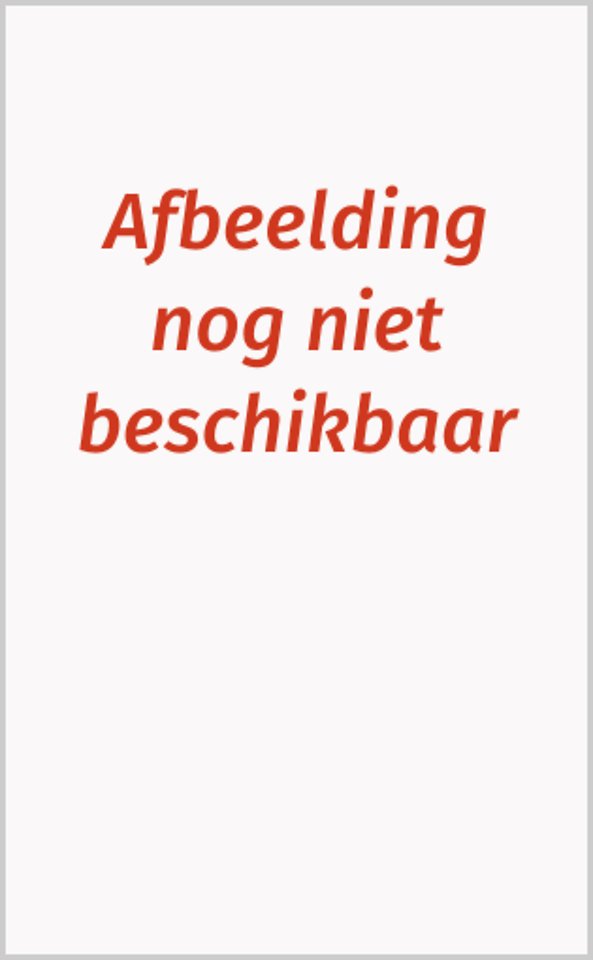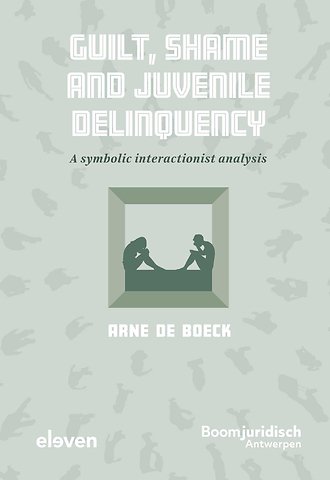Guilt, Shame and Juvenile Delinquency
A symbolic interactionist analysis
Samenvatting
Emotions such as guilt and shame motivate us to keep our actions in line with normative expectations and are therefore essential in regulating our social and moral lives. Guilt, Shame and Juvenile Delinquency provides a compelling argument for the importance of considering guilt and shame as part of the etiological underpinnings of juvenile delinquency. It presents a comprehensive review of the criminological literature on the relationship between shame, guilt and offending, and it integrates both emotions into a symbolic interactionist theory of delinquency.
The book focuses in particular on the delinquency-inhibiting effects of forward-looking forms of guilt and shame, providing empirically-grounded insights into their gendered nature and social origins.
Guilt, Shame and Juvenile Delinquency will provide valuable insights not only for researchers working in the field of juvenile delinquency, but for all social scientists interested in the influence of guilt and shame on normative behaviour.
Trefwoorden
Specificaties
Inhoudsopgave
1 The Place of Guilt and Shame among the Emotions 5
1.1 What are emotions? 5
1.2 What kind of emotions are guilt and shame? 7
1.2.1 Self-conscious emotions 7
1.2.2 Social emotions 8
1.2.3 Moral emotions 9
1.3 What are the differences between guilt and shame? 10
1.3.1 Public versus private 10
1.3.2 Self versus behaviour 13
1.3.3 Adaptive versus maladaptive action tendencies 16
1.3.4 Some additional remarks on the shame-guilt distinction 17
1.4 How do guilt and shame compare with other, closely related emotions? 18
1.5 Conclusion 20
2 The Relationship of Guilt and Shame to Crime and Delinquency: a Review of Research 23
2.1 Approach and selection of studies 23
2.2 Actually experienced feelings of guilt and shame 24
2.2.1 Generalised guilt and shame 25
2.2.2 Domain-specific shame 26
2.2.3 Event-related guilt and shame 27
2.3 Anticipated feelings of guilt and shame 31
2.3.1 General guilt- and shame-proneness 31
2.3.2 Anticipated offence-related guilt and shame 36
2.4 Conclusion 41
3 Prospective Guilt and Shame: a Symbolic Interactionist Analysis 43
3.1 Guilt and shame in criminological theory 43
3.1.1 Between utility calculation and moral filtering 43
3.1.2 Between internalisation and social disapproval 47
3.2 A symbolic interactionist alternative 50
3.2.1 Mead’s pragmatist theory of the self 50
3.2.2 Differential social control theory 54
3.2.3 Guilt and shame as role-taking emotions 55
3.2.4 The role of prospective guilt and shame in the explanation of delinquency 58
3.2.5 Prospective guilt and shame: conceptual clarifications 59
3.3 Conclusion 62
4 Individual and Gender Differences in Prospective Guilt and Shame: Where Do They Come From? 63
4.1 The family and the school 64
4.2 Peers and friends 65
4.3 Reflected appraisals as a ‘troublemaker’ by parents, teachers an friends 67
4.4 The religious group or community 69
4.5 Traditional gender role norms 71
4.6 Summary of the hypotheses 73
5 Data and Methods 75
5.1 Research design 75
5.2 Sample 77
5.3 Survey design and measures 80
5.3.1 Dependent variable: prospective shame-guilt 81
5.3.2 Independent variables 83
5.4 Data analysis 86
5.4.1 Confirmatory factor analysis 86
5.4.2 Multiple regression analyses 88
5.4.3 Multiple mediator path analysis 89
5.5 Methodological notes 89
5.5.1 Beyond null hypothesis significance testing 89
5.5.2 Causality 91
6 Descriptive Findings and Measurement Aspects 93
6.1 Prospective guilt and shame 93
6.1.1 Descriptive results 93
6.1.2 Dimensionality 96
6.2 Independent variables 102
6.2.1 Religiosity 102
6.2.2 Relationship with parents 103
6.2.3 Relationship with teachers 105
6.2.4 Perceived delinquency of friends 106
6.2.5 Reflected appraisals as a troublemaker 107
6.2.6 Traditional gender role attitudes 109
6.2.7 Prior delinquency 112
6.3 Conclusion 112
7 Main Findings 115
7.1 Analytic strategy 115
7.2 Benchmarking of the coefficient estimates 117
7.3 Prospective shame-guilt for shoplifting 118
7.4 Prospective shame-guilt for retaliatory violence 126
7.5 Differential effects for shoplifting versus retaliatory violence? 133
7.6 A closer examination of gender differences in prospective shame-guilt 135
7.7 Discussion 139
7.7.1 Social factors and prospective shame-guilt 139
7.7.2 Gender differences in prospective shame-guilt 143
8 General Conclusion 147
8.1 Summary of the main results 147
8.2 Implications for theory and practice 153
8.3 Limitations 157
8.4 Avenues for future research 159
Bibliography 163
Anderen die dit e-book kochten, kochten ook
Rubrieken
- cadeauboeken
- computer en informatica
- economie
- filosofie
- flora en fauna
- geneeskunde
- geschiedenis
- gezondheid
- jeugd
- juridisch
- koken en eten
- kunst en cultuur
- literatuur en romans
- mens en maatschappij
- naslagwerken
- non-fictie informatief/professioneel
- paramedisch
- psychologie
- reizen
- religie
- schoolboeken
- spiritualiteit
- sport, hobby, lifestyle
- thrillers en spanning
- wetenschap en techniek
- woordenboeken en taal







